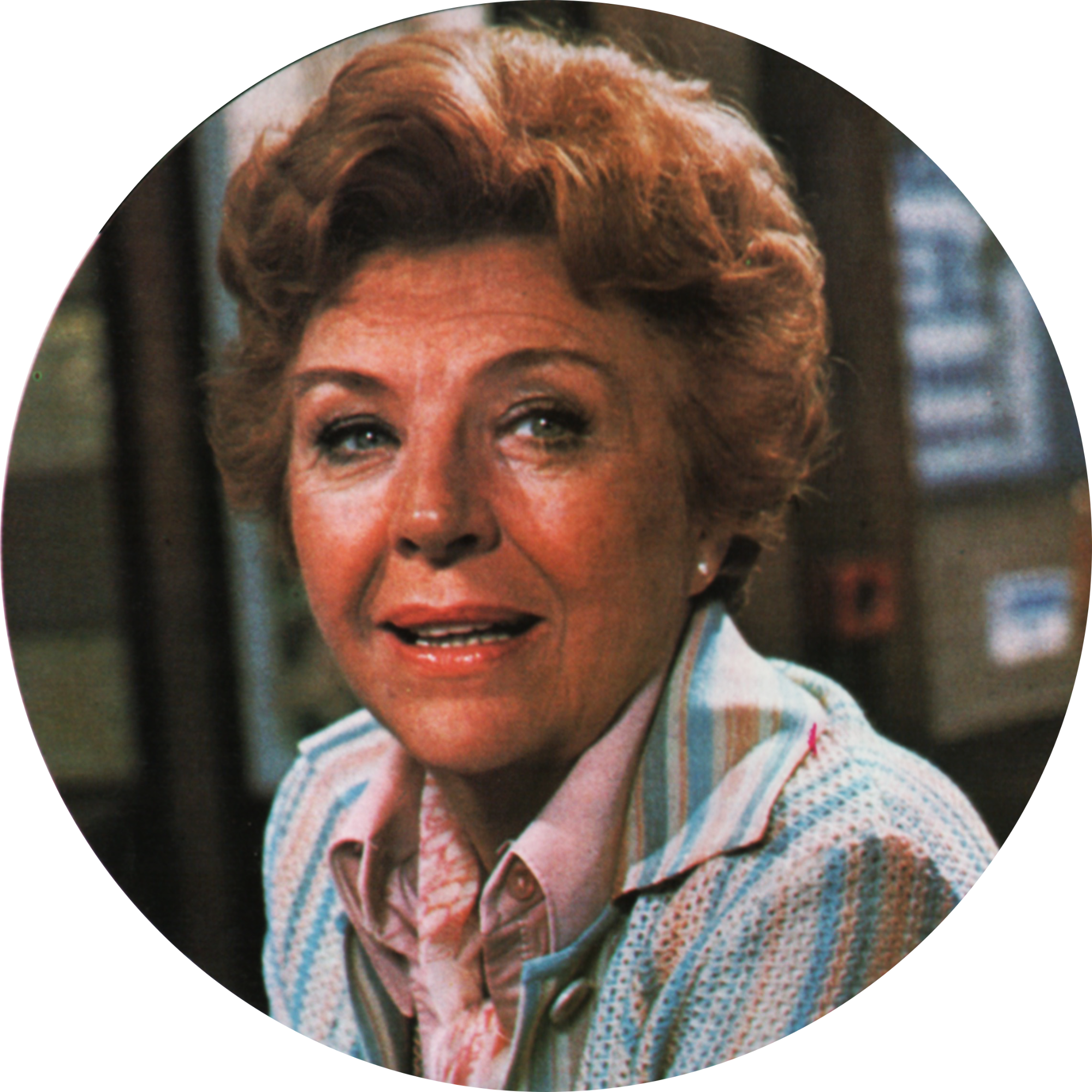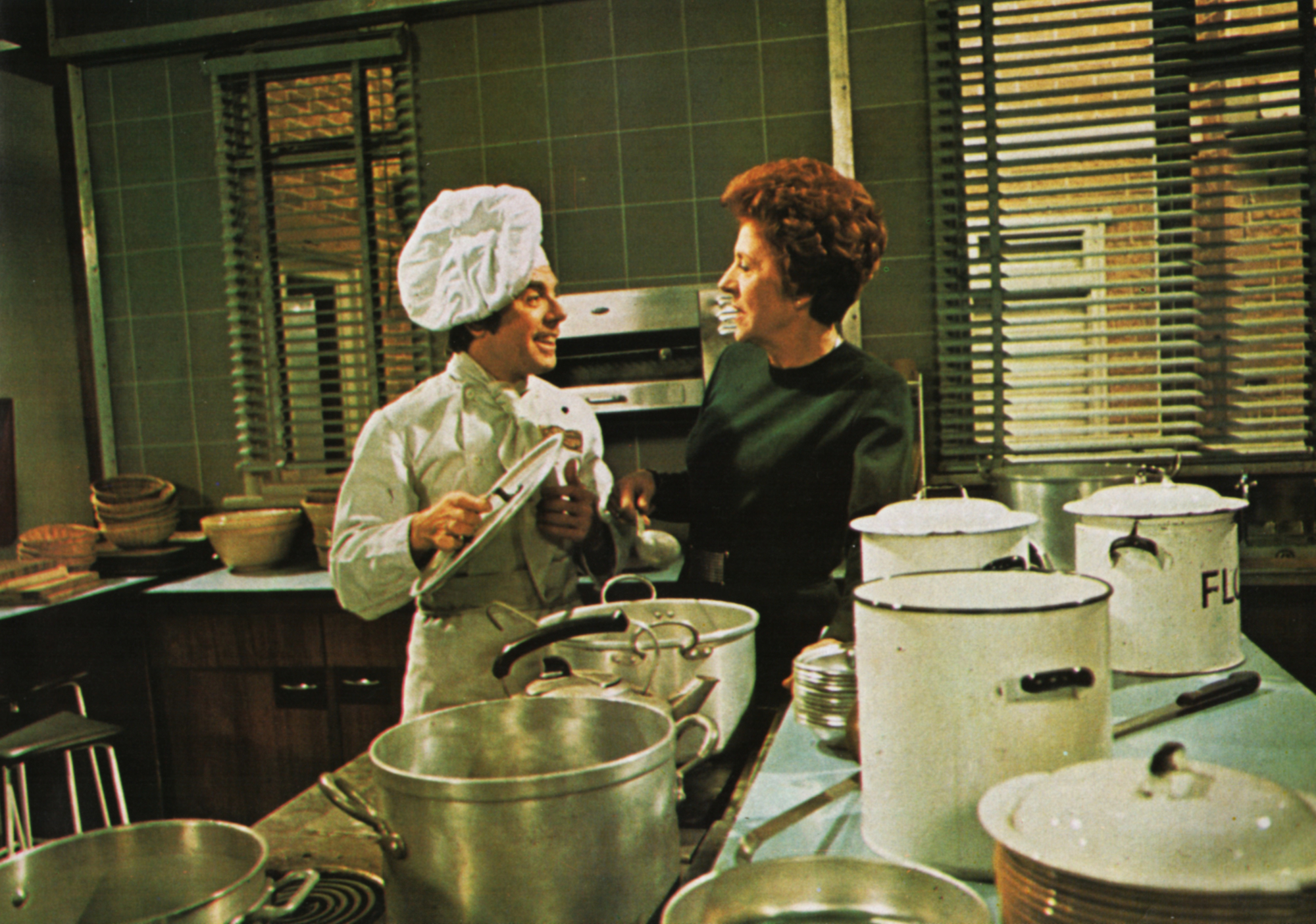Producer Jack Barton heads a team of directors, editors, writers, secretarial staff and a cast who he regards as ‘his family’.
That same ‘family’ are always the first to acknowledge that the great success the programme has enjoyed would not have been acheieved without the dedicated and professional contribution of the technical and studio crews.
The first episode of Crossroads was transmitted on 2nd November 1964.
On 19th September 1978 the programme will reach its 3,000th episode – an all-time record in British television.
Each week four episodes are seen by over 14,000,000 viewers, and the programme consistently heads the ratings in the nation ‘Top Ten’ programme charts, and many of its stars have now become household names.
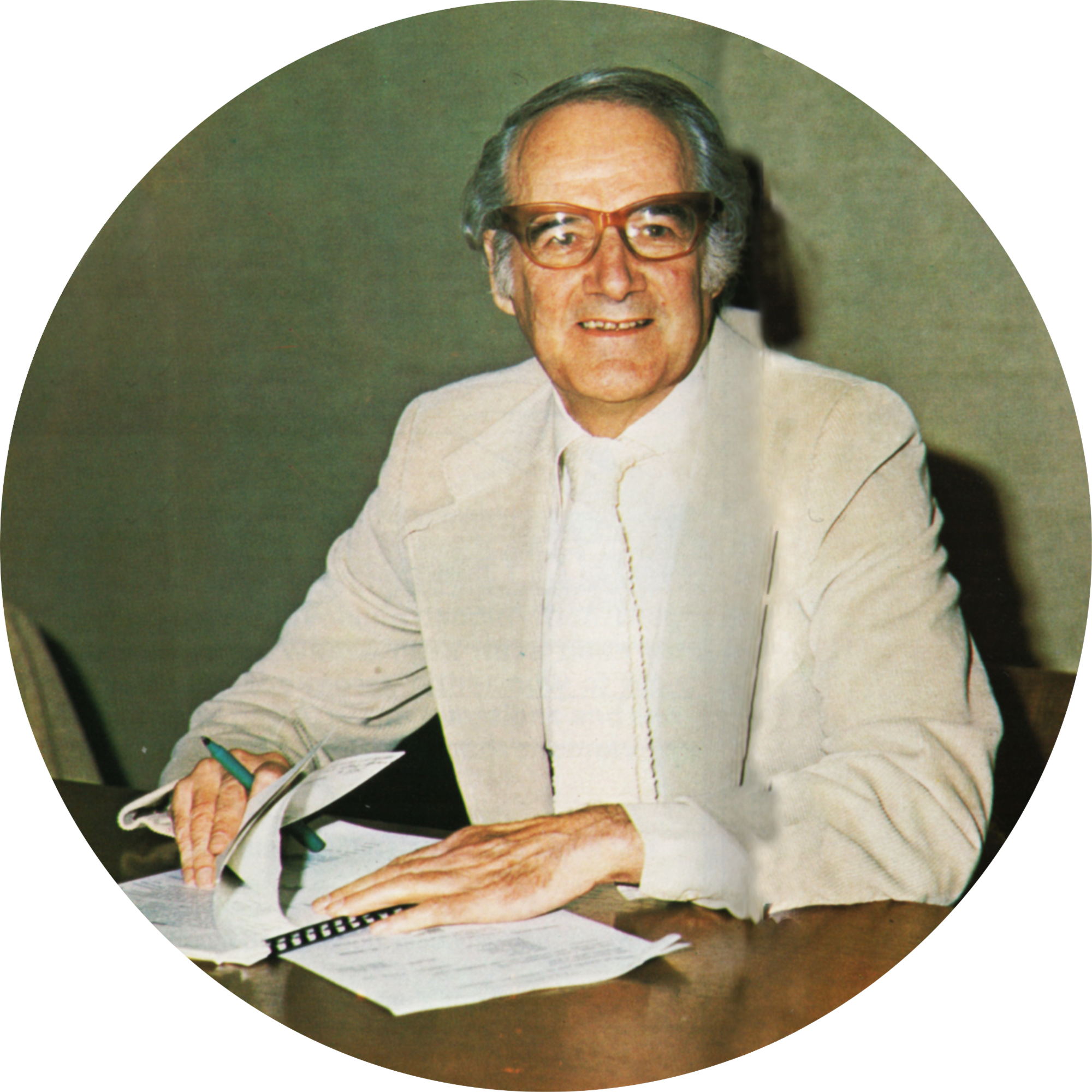
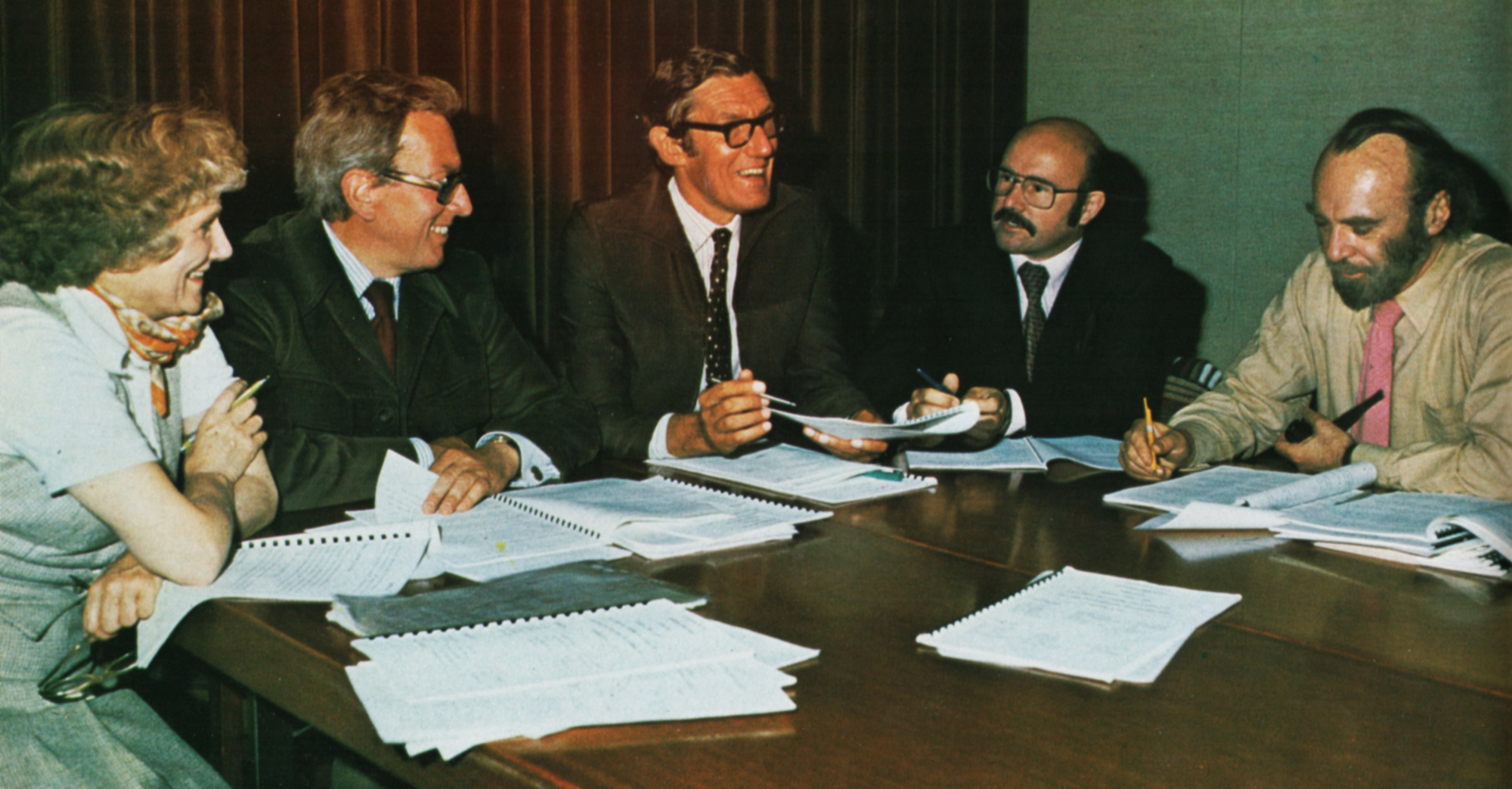

Crossroads has won the SUN AWARD for the best TV series for three consecutive years – 1973/4/5.
Producer Jack Barton won ATV Network’s LEONARD BRETT AWARD for the most outstanding contribution to the company’s output in 1977.
Noele Gordon, already known to millions as hostess of Lunch Box has achieved international fame as Meg Richardson, later to become Mrs Hugh Mortimer. She has won the TV TIMES AWARD for the favourite TV personality on no fewer than eight occasions, and has also won the TV TIMES AWARD for the most compulsive character, She was the first award winner in TV TIMES’ HALL OF FAME and has won the SUN AWARD for the top TV personality.
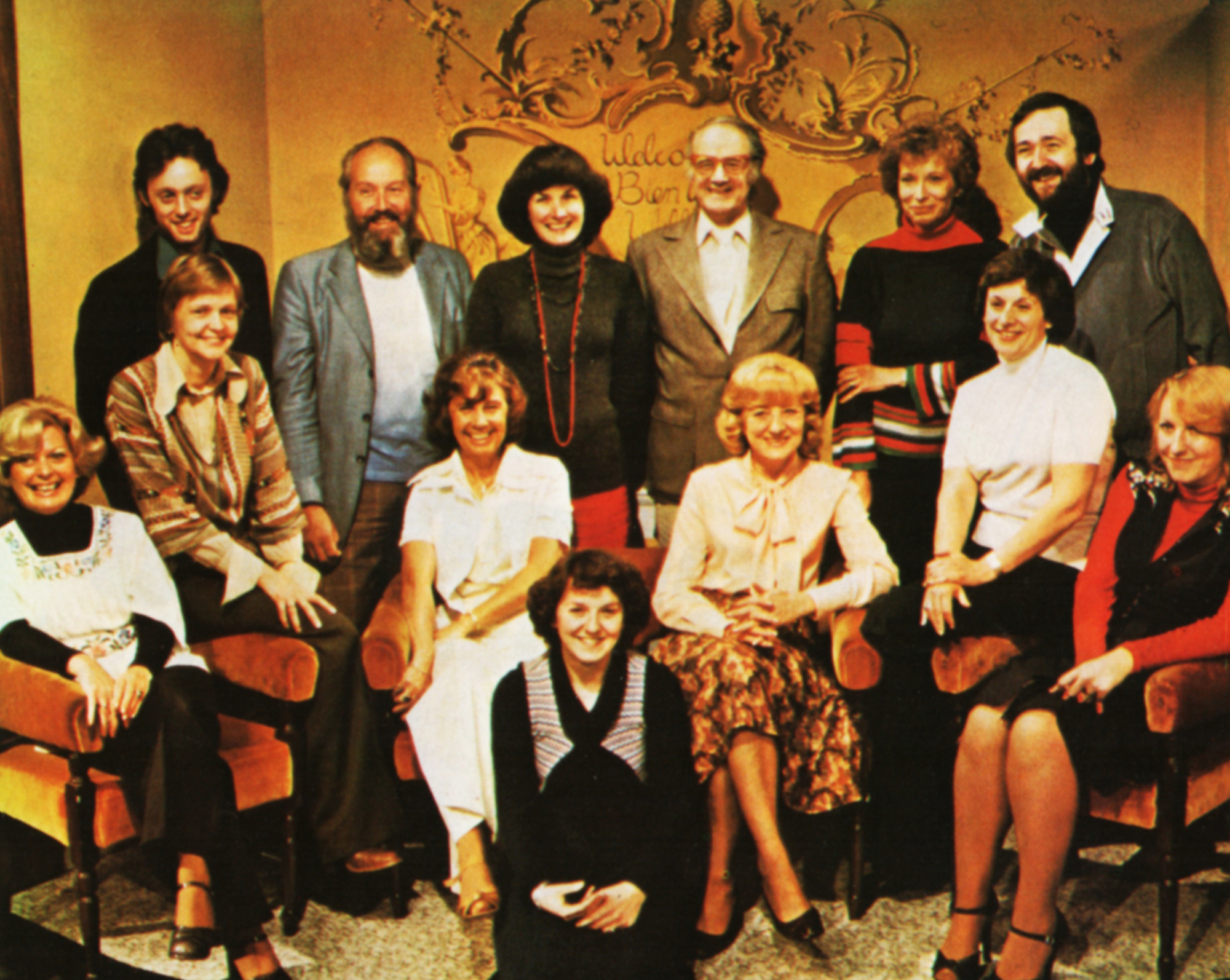
The Crossroads Production Team
Back row, standing, left to right: Jim Allen (stage manager), Michael Hart (director), Verity Lyall (production assistant), Jack Barton (producer), Valerie Nieberle (production assistant) and David Dunn (director).
Seated, left to right: Kathryn Pittock (secretary), Carol Glover (production assistant), Barbara Plant (secretary), Margaret French (production manager), Elizabeth Stern (stage manager) and Anne Hipkins (script typist).
Kneeling, front: Kay Dovey (script typist).


